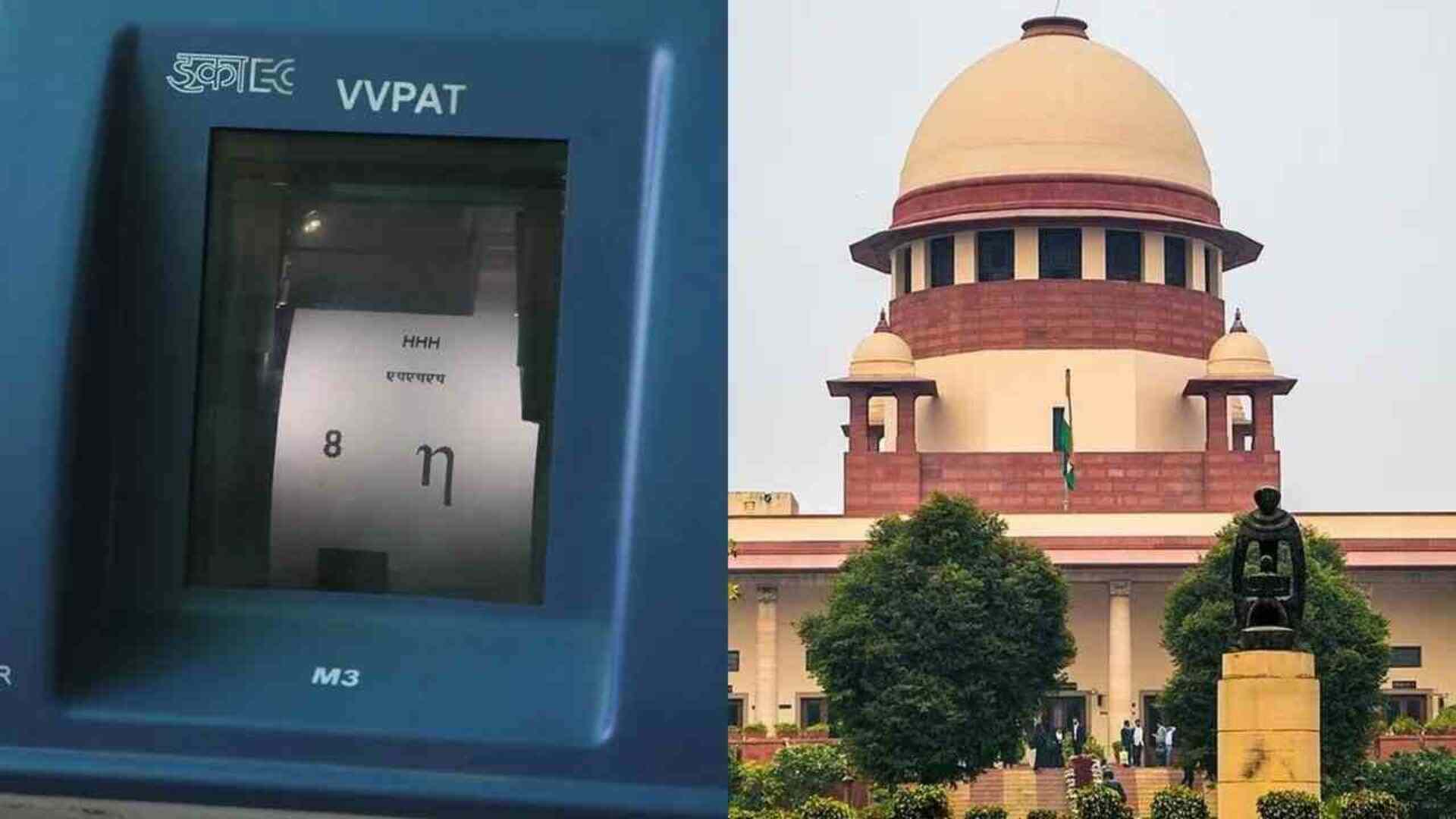


The Supreme Court upheld the reliability of Electronic Voting Machines (EVMs) and their integration with Voter Verifiable Paper Audit Trails (VVPATs), dismissing petitions that sought 100% cross-verification of votes cast on EVMs with VVPATs or a return to the ballot paper system. Justices Sanjiv Khanna and Dipankar Datta expressed confidence in the current electoral mechanisms, stating that mere suspicion is insufficient to question a system crucial to the democratic process of India.
To address candidate apprehensions and strengthen the existing mechanism, the court issued two directives. It mandated that containers carrying the symbol loading unit be sealed in the presence of candidates or their polling agents and kept secure for 45 days, the period for which the control unit, ballot unit, and VVPATs are preserved for enabling candidates to file election petitions against the poll result. Additionally, it ordered that if any candidate files a written complaint within seven days of the poll results, casting doubt on the process’s dependability, the control unit, ballot unit, and VVPATs would be examined by the engineers of the EVM manufacturing companies following the results announcement.
The ruling coincided with the second phase of the Lok Sabha elections. The court’s decision came after it previously remarked that the Election Commission of India (ECI), as a separate constitutional authority, is responsible for overseeing election management, and the court cannot issue orders questioning the efficacy of EVMs and their integration with the VVPATs solely based on suspicions or private reports.
The batch of petitions before the court generated political heat and public interest regarding ensuring the integrity of electronic voting via VVPATs. This system provides a paper slip confirmation, viewed by the voter through a transparent window, which goes into a sealed cover available for verification in case of disputes. Presently, the verification process involves checking VVPAT slips from five randomly selected EVMs in each assembly segment.
The integration of VVPAT with EVMs gained legal prominence following a petition by BJP leader Subramanian Swamy after the 2009 general elections. Swamy advocated for a paper trail to augment the reliability of electronic voting, arguing that it would ensure that each vote cast on an EVM is accurately recorded. Initially dismissed by the Delhi high court, the plea found favor in the Supreme Court, which, in its landmark 2013 judgment, declared the VVPAT system an “indispensable requirement” for free and fair elections.
The Election Commission of India (ECI) was directed to implement VVPAT systems across electoral processes to complement EVMs. This system enables the generation of a paper slip for each vote cast, which is displayed to the voter behind a transparent window for seven seconds before being securely stored. This mechanism allows for a physical audit trail of votes cast electronically, serving as a safeguard against potential discrepancies in the electronic tally.
Initially, ECI conducted mandatory verification of VVPAT paper slips for one randomly selected polling station per assembly segment in a constituency. In April 2019, the top court ordered that the number of EVMs subjected to VVPAT verification be increased from one EVM per assembly segment to five EVMs. The direction came following a petition filed jointly by 21 Opposition parties seeking a review of at least 50% of VVPAT slips to ensure the integrity of the elections. The parties returned to the Supreme Court in May 2019, asking for the counting of at least 25% VVPATs instead of only five in every assembly segment, but the court rejected their plea.
When hearing the batch of petitions on previous dates, the court remarked that “the system was working well” and “over-suspicion” alone cannot justify criticism after careful consideration of explanations provided by the ECI in response to petitions demanding 100% cross-verification of votes cast on EVMs with VVPATs.
The court also considered it improper to compare EVMs with systems used in other countries, after some petitioners cited examples from Bangladesh and Germany where different voting methods are used. “Don’t say other countries have better systems than ours. We have our own system. It’s working well. It’s doing well…why should we disband it? Earlier, we saw the problems with the ballot system. Every year, the percentage of voting has gone up…from 60-66% is indicative of the faith that voters have in the system,” the court observed on April 18.